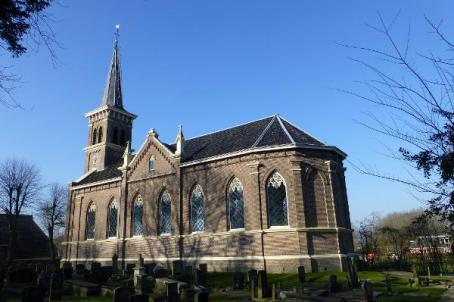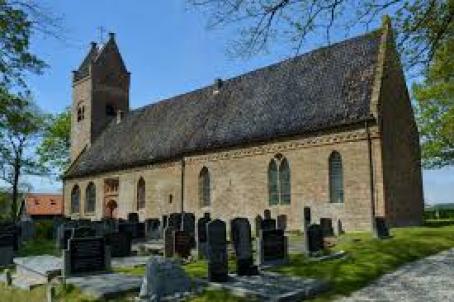Johannes Church

On the high terp of Britsum is the striking Johanneskerk. The nave dates from the thirteenth century, but was bricked up in the nineteenth century. The church has beautiful wall paintings that have been restored.
About this building
Britsum is an old mound village on the east side of the former Middelzee. On the high terp is the ancient church of Britsum. From the cemetery you have a pleasant view of the surroundings. The church and tower are completely bricked up and partly plastered. The tower is built in, so has reduced westwork. The tower and church run into each other through domed arched side spaces. The church, famous for its medieval frescoes, attracts many interested people who come to admire it. At the same time, the presence of the frescos reduces the possibilities for use, especially in winter, as there is no heating in the church, because that would be disastrous for the frescos. The church is used in the summer for worship services and occasionally a concert.





